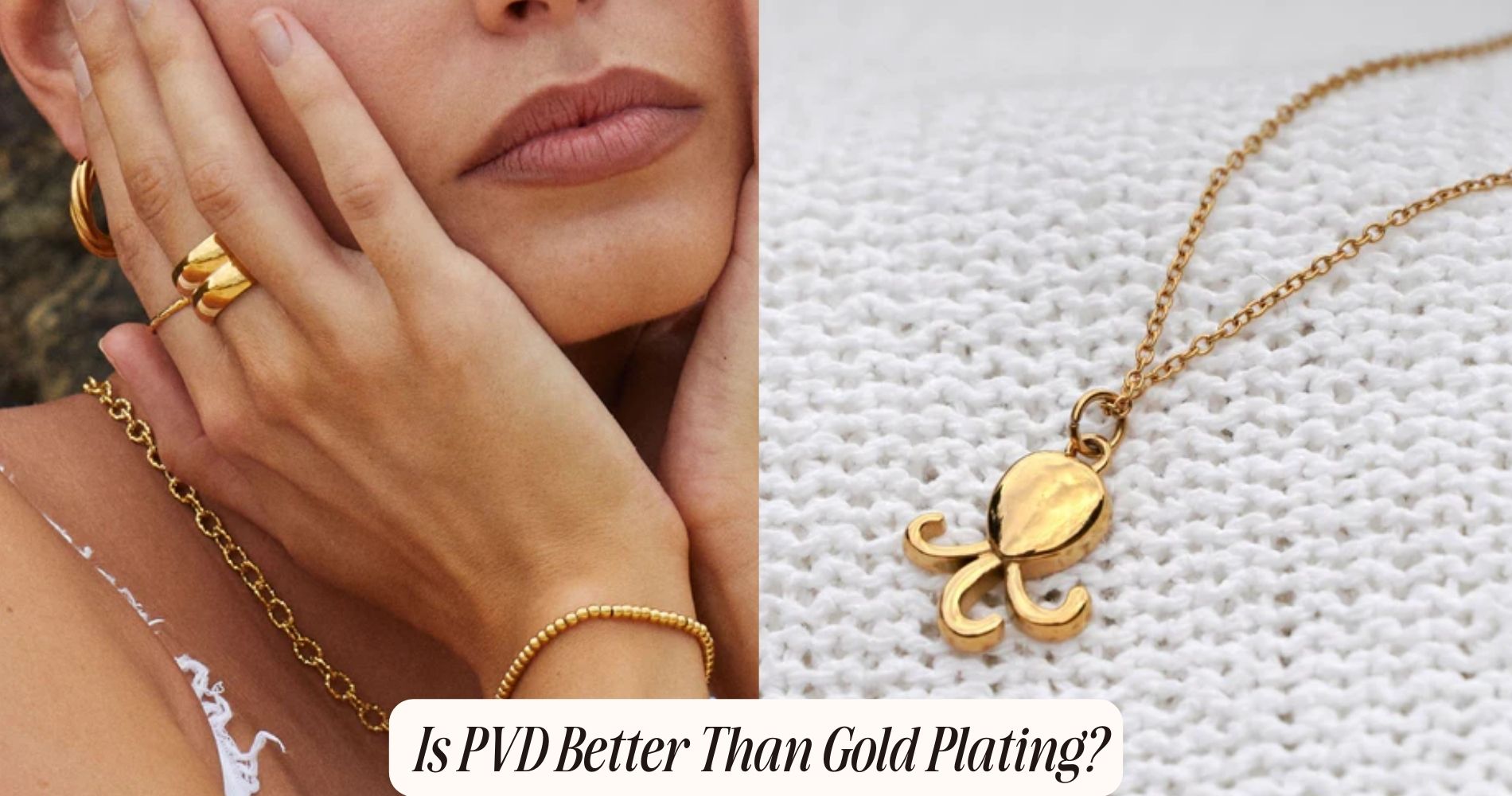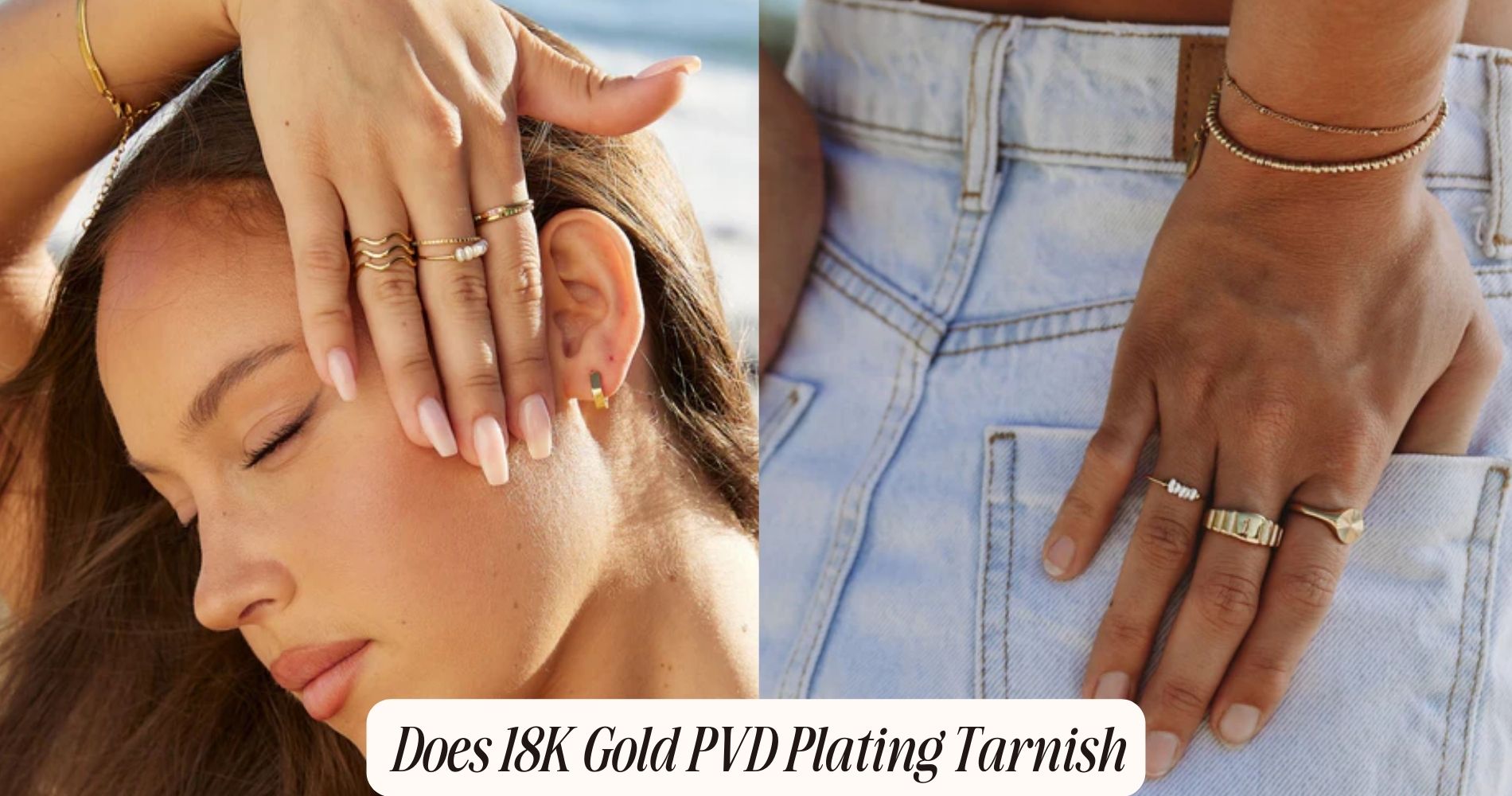
Is PVD Better Than Gold Plating?
What Is PVD?
Fundamentally, Physical Vapor Deposition (PVD) is a vacuum coating process that produces thin films by physically transferring material from a source to the substrate. This technique dates back to the 19th century, but it saw significant advancements in the mid-20th century with the advent of modern vacuum technology. PVD encompasses a variety of coating types, including evaporative, sputter, and arc deposition.
In essence, in PVD history, the primary focus was to develop coatings that could enhance the durability and functionality of tools and components. For instance, cutting tools benefit from titanium nitride (TiN) coatings, which extend their lifespan by reducing wear and friction. Other common PVD coatings include aluminum oxide (Al2O3) and chromium nitride (CrN), each tailored for specific applications based on material properties and desired outcomes.
You can achieve coatings with thicknesses ranging from a few nanometers to several micrometers, offering precise control over the coating characteristics.
The advantages of PVD are well-documented, with empirical data showing significant improvements in hardness, adhesion, and corrosion resistance. In essence, PVD allows for high-performance coatings that meet stringent industrial requirements, ensuring both reliability and efficiency in various applications.
What Is Gold Plating?
You should understand that gold plating involves depositing a thin layer of gold onto a substrate through an electrochemical process.
Analyzing its durability, gold plating typically measures between 0.5 to 2.5 microns, which impacts wear resistance.
Data shows that while aesthetically appealing, gold plating can wear off relatively quickly under frequent use.
Gold Plating Process
Gold plating is a process that involves depositing a thin layer of gold onto the surface of another metal through electrochemical means. In this electroplating process, the substrate metal is immersed in a chemical bath containing a gold salt solution. When an electric current is applied, gold ions in the solution are reduced and bond to the substrate, forming a uniform, thin layer of gold.
To achieve essential adhesion and coverage, you've got to make sure the substrate is meticulously cleaned and pre-treated. Any impurities can cause defects in the coating.
The electroplating bath's composition, temperature, and pH level are vital variables that directly impact the quality of the gold layer. For instance, maintaining the bath within a temperature range of 50-70°C can enhance deposition rates and layer uniformity.
Thickness control is another critical factor. The gold layer typically ranges from 0.5 to 5 microns, depending on the intended application. A thinner layer is generally used for decorative purposes, while thicker layers are employed in electronics for better conductivity and corrosion resistance.
Precise control over these parameters ensures that the resulting gold plating meets specific functional and aesthetic requirements.
Durability and Wear
Ensuring the durability and wear resistance of gold plating hinges on the thickness and quality of the gold layer, which can greatly impact its performance in various applications. Typically, gold plating thickness ranges from 0.5 to 5 microns. Thicker coatings exhibit superior wear resistance but are more costly due to higher gold content. Coating types, such as hard gold plating (alloyed with cobalt or nickel), can enhance durability compared to soft gold plating.
Surface preparation also plays an essential role in the longevity of gold plating. Proper cleaning and removal of contaminants are crucial to guarantee the ideal adhesion of the gold layer. Techniques like electrocleaning or ultrasonic cleaning are often employed to achieve a pristine substrate surface. Inadequate surface preparation can lead to weak adhesion, causing premature wear and corrosion.
Analytical studies show that well-prepared substrates with a gold layer of at least 2 microns can withstand moderate wear in low-friction environments. However, in high-friction or abrasive conditions, even thicker gold plating may not suffice, necessitating alternative coating types.
Therefore, understanding the interplay between gold layer thickness, alloy composition, and surface preparation is essential for achieving the desired durability and wear resistance in gold-plated components.
Durability Comparison
When comparing the durability of PVD and gold plating, data shows that PVD coatings offer superior resistance to wear and corrosion. PVD, or Physical Vapor Deposition, employs a process that creates a bond at the molecular level, resulting in a harder and more resilient surface. This method addresses durability challenges effectively, providing a coating longevity that far exceeds traditional gold plating.
Gold plating, while aesthetically pleasing, is often prone to wear and tear due to its softer nature and thinner application. Studies indicate that PVD coatings exhibit a hardness rating between 1500-4500 HV (Vickers Hardness), whereas gold plating typically ranges from 100-200 HV. This significant difference in hardness translates to PVD's enhanced ability to withstand abrasive conditions and mechanical stress.
Moreover, PVD coatings show exceptional corrosion resistance. In salt spray tests, PVD-treated surfaces can endure up to 1000 hours without degradation, compared to gold plating, which may start to show signs of corrosion within 24-48 hours. This makes PVD a more reliable choice for environments with high humidity or exposure to corrosive elements.
Appearance and Finish
Analyzing the appearance and finish of PVD versus gold plating reveals distinct differences in aesthetic quality and surface smoothness. PVD (Physical Vapor Deposition) coatings exhibit a superior shine longevity, maintaining their luster over extended periods without significant degradation. This extended shine longevity results from the robust adhesion of the PVD layer to the substrate, which safeguards against tarnishing and wear more effectively than traditional gold plating.
Gold plating, on the other hand, offers a classic, rich appearance initially but tends to lose its luster faster due to its thinner application and susceptibility to environmental factors. Surface texture is another critical factor where PVD outperforms gold plating. PVD coatings produce a uniformly smooth surface texture, which enhances both visual and tactile appeal. This smoothness is achieved through an advanced deposition process that guarantees consistent layer thickness and minimal surface imperfections.
In contrast, gold plating's surface texture might exhibit micro-level inconsistencies due to the nature of the electroplating process, which can lead to uneven wear and aesthetic degradation over time.
Consequently, if you're prioritizing a finish that retains its shine and smooth texture over the long term, PVD presents a more reliable option compared to traditional gold plating.
Applications and Uses
You'll find PVD and gold plating used extensively in both jewelry and industrial applications.
Data shows PVD coatings offer superior durability with wear resistance up to three times higher than traditional gold plating, making them ideal for high-contact items.
In contrast, gold plating's lower cost makes it suitable for decorative purposes where longevity isn't as critical.
Jewelry and Accessories
In the world of jewelry and accessories, PVD (Physical Vapor Deposition) offers superior durability and resistance to tarnishing compared to traditional gold plating. When you choose PVD-coated jewelry, you're opting for a finish that outperforms gold plating in several key areas.
For starters, PVD processes have a considerably lower environmental impact. Unlike traditional plating, which often involves toxic chemicals and generates hazardous waste, PVD uses a vacuum deposition method that minimizes pollutants.
Maintenance requirements for PVD-coated jewelry are also significantly lower. Traditional gold-plated items tend to wear off and tarnish over time, requiring frequent re-plating and polishing. PVD coatings, on the other hand, provide a hard, scratch-resistant surface that maintains its luster for years with minimal upkeep. This means less frequent cleaning and fewer repairs, saving both time and money.
Statistical data supports these claims: PVD coatings can last up to 10 times longer than traditional gold plating. With a hardness rating of up to 2500 HV (Vickers Hardness), PVD-coated jewelry is less susceptible to everyday wear and tear.
Therefore, PVD technology not only enhances the longevity of your accessories but also offers a more sustainable and maintenance-free option.
Industrial Applications
Beyond the realm of jewelry and accessories, PVD technology plays a pivotal role in industrial applications due to its exceptional durability and resistance to wear. You'll find PVD coatings extensively used in tools and machinery, where their superior hardness and low friction coefficients enhance performance and longevity. This translates into significant industrial benefits, such as extended tool life and reduced maintenance costs, ultimately optimizing operational efficiency.
In the manufacturing sector, PVD offers distinct advantages over traditional gold plating. For instance, in the automotive industry, PVD-coated components exhibit superior corrosion resistance compared to gold-plated parts, which is essential for parts exposed to harsh environments and high temperatures. Additionally, in the aerospace industry, PVD coatings contribute to weight reduction without sacrificing structural integrity, thereby improving fuel efficiency.
Moreover, PVD technology's eco-friendly process, which involves minimal hazardous waste, aligns with industry trends towards sustainable manufacturing practices. The high deposition rate and uniform coating achieved through PVD also ensure consistent quality, meeting stringent industrial standards.
Therefore, when you consider the manufacturing advantages, PVD not only outperforms gold plating concerning durability and functionality but also supports greener production processes, making it the preferred choice for various industrial applications.
Conclusion
Ultimately, PVD (Physical Vapor Deposition) surpasses gold plating when it comes to durability, wear resistance, and overall longevity.
While gold plating offers a classic, luxurious appearance, it's prone to tarnishing and wear. PVD coatings provide consistent, high-quality finishes that withstand rigorous use.
When considering cost, PVD might be initially higher, but its long-term benefits outweigh the recurring expenses of gold plating maintenance.
For applications demanding resilience and lasting aesthetic, PVD is the superior choice.























Leave a comment
This site is protected by hCaptcha and the hCaptcha Privacy Policy and Terms of Service apply.